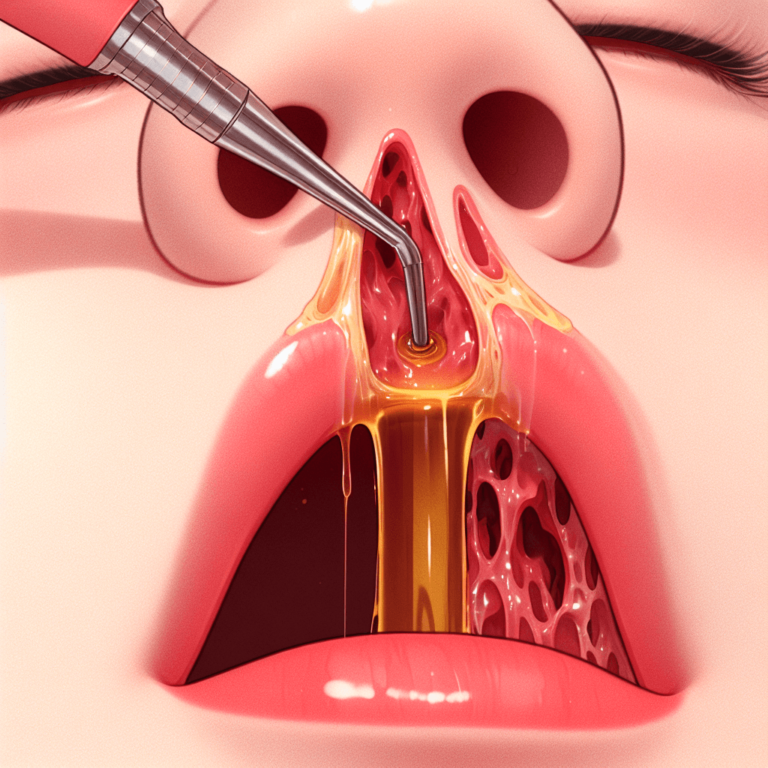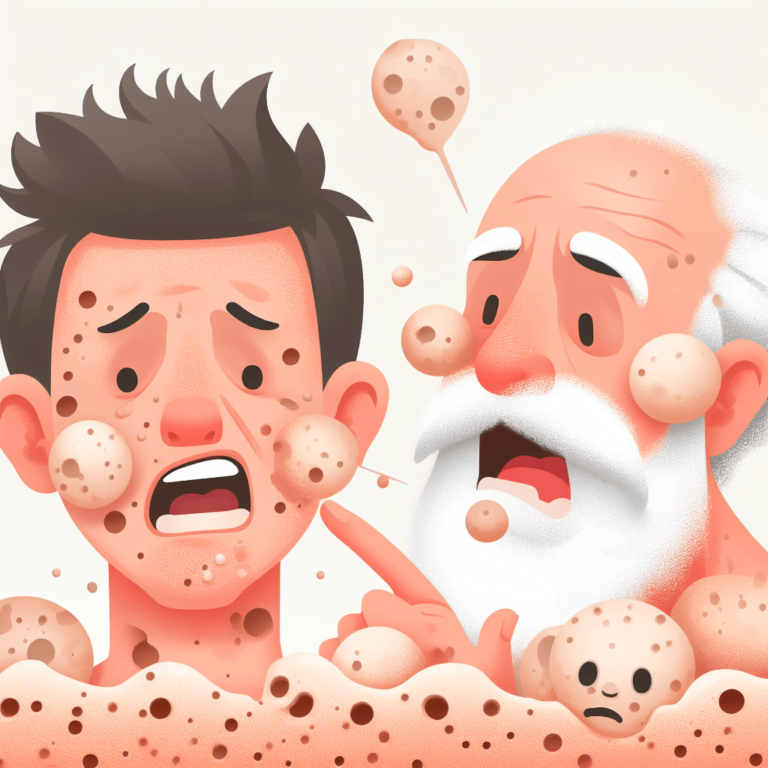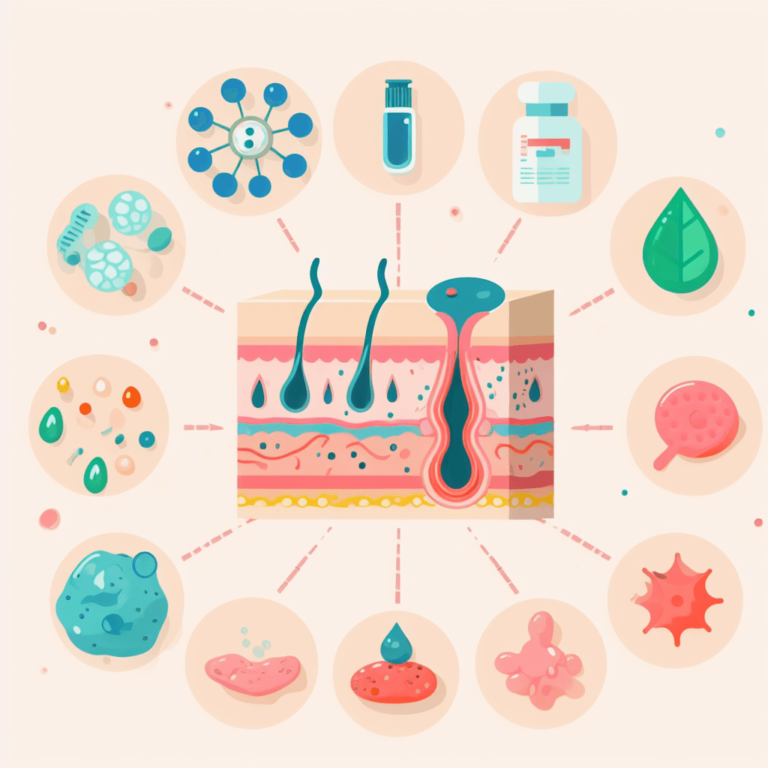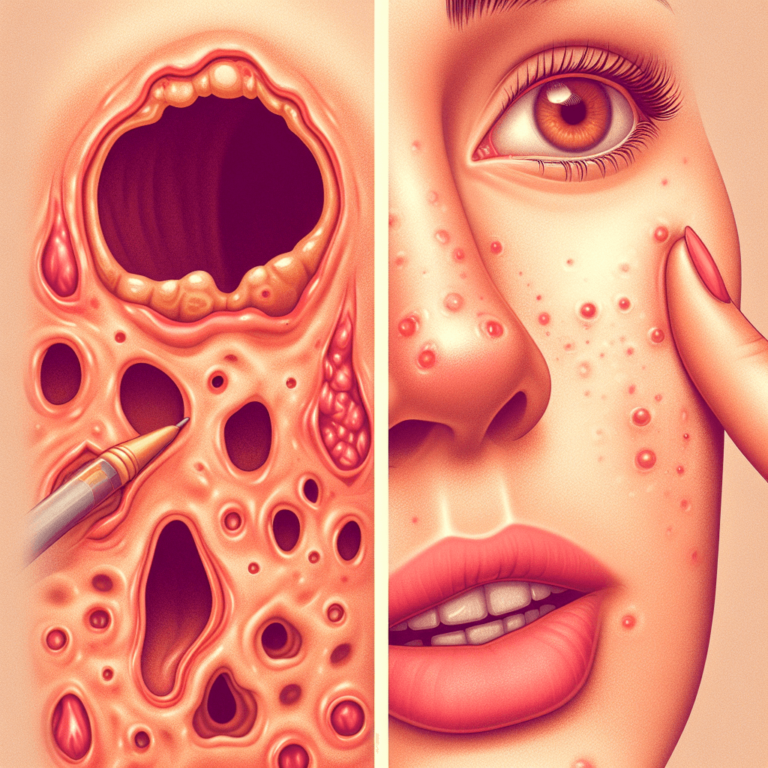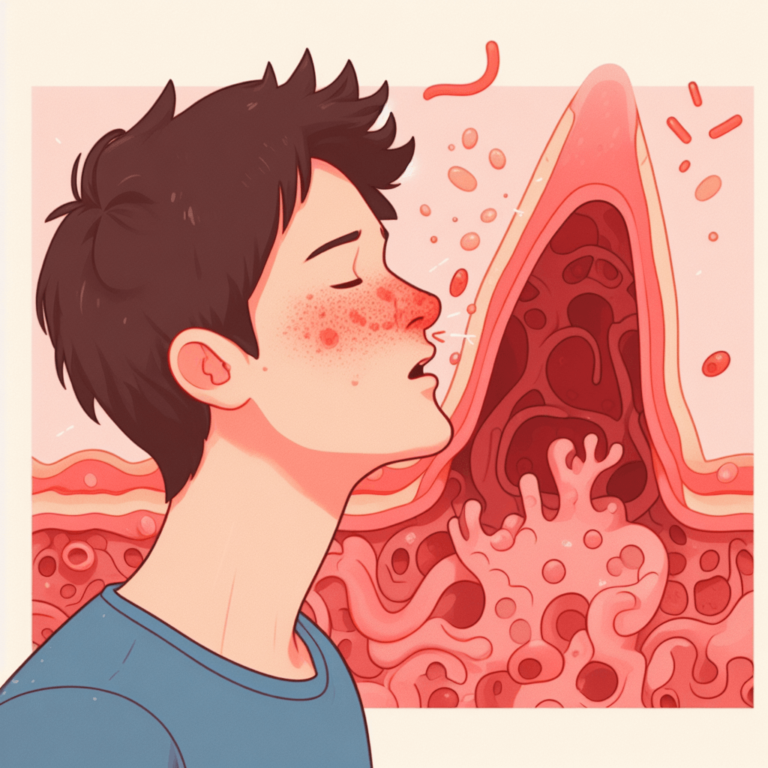Clogged Pore vs. Cyst
Clogged pores and cysts are distinct skin concerns that differ in their nature, appearance, and underlying causes. Let’s explore the contrasting characteristics of these two skin issues.
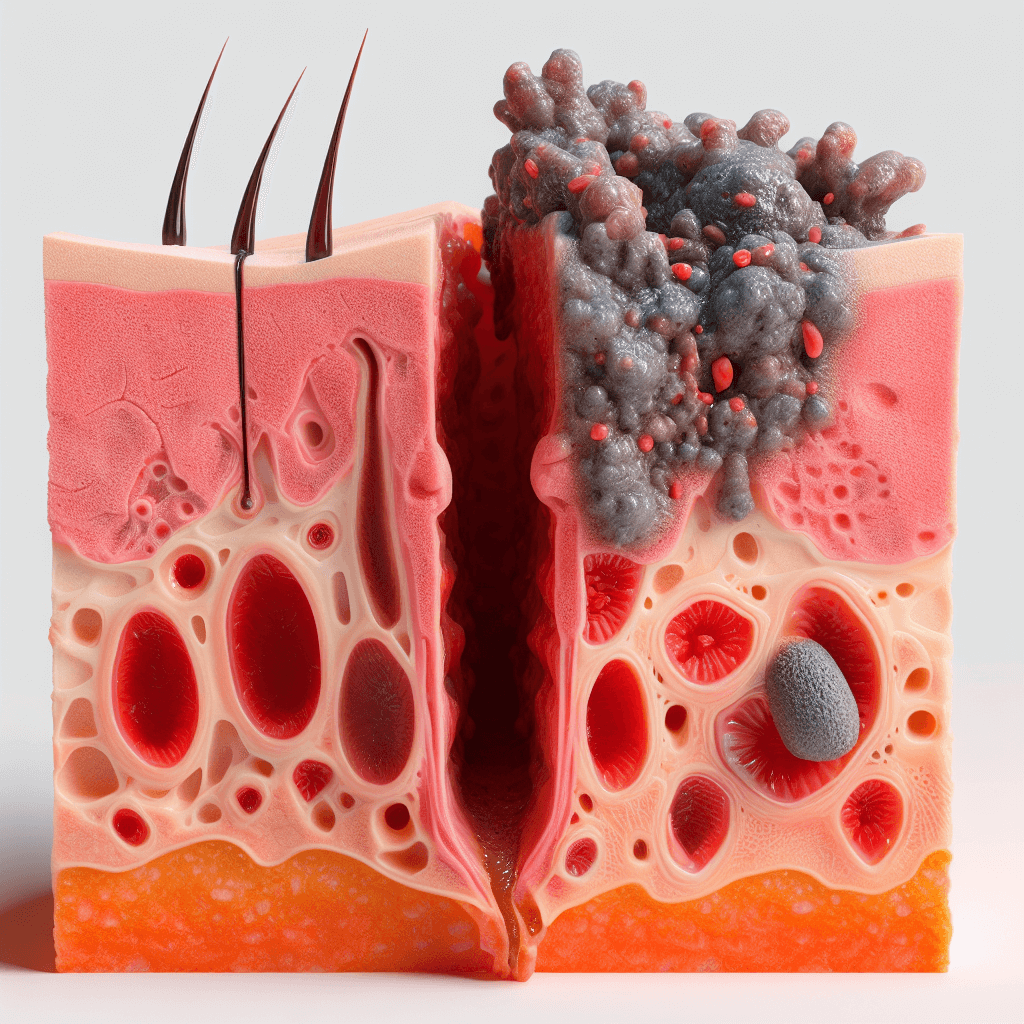
1. Clogged Pore:
Definition: A clogged pore occurs when dead skin cells, excess oil, or debris obstruct the hair follicle’s opening, leading to pore congestion.
Types of Clogged Pores:
- Open Comedones (Blackheads): Partially blocked pores with darkened tips due to oxidation.
- Closed Comedones (Whiteheads): Completely blocked pores, appearing as small flesh-colored bumps.
Appearance: Clogged pores manifest as open or closed bumps, with blackheads showing darkened surfaces and whiteheads having a closed appearance.
2. Cyst:
Definition: A cyst is a closed sac-like structure beneath the skin, containing fluid, pus, or other materials, formed due to various factors like infections, inflammation, or blockages.
Characteristics: Cysts are often larger and deeper than typical pimples, appearing as raised, swollen lumps under the skin.
Causes: Cysts can develop from blocked oil glands, infections, or other skin issues, often involving inflammation and tenderness.
Distinguishing Factors:
- Nature of Formation: Clogged pores are surface-level blockages within the pores, while cysts form deeper within the skin, creating noticeable lumps or bumps.
- Size and Depth: Cysts are generally larger and deeper than clogged pores, often causing more noticeable lumps under the skin.
You may Also Like: Can A Clogged Pore Become Cyst and Pore Clogging Checker
Treatment Approach:
- Clogged Pores: Regular exfoliation and proper cleansing can help manage clogged pores.
- Cysts: Treatment may involve professional drainage by a dermatologist, prescription medications, or corticosteroid injections for inflammation.
Final Thoughts:
Understanding the disparities between clogged pores and cysts assists in recognizing and addressing various skin concerns. While clogged pores are surface-level blockages, cysts involve deeper, often larger, and more inflamed structures beneath the skin.

